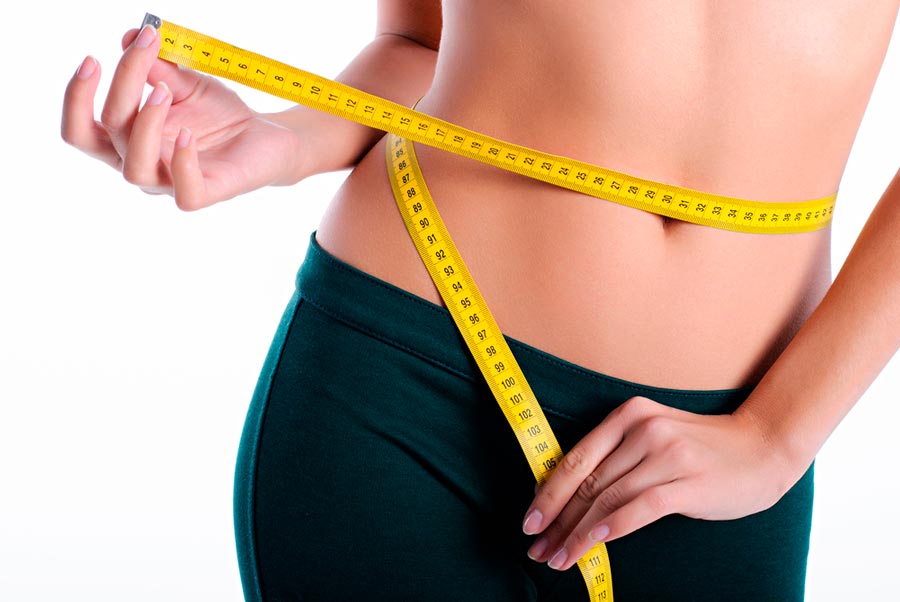A person may have a higher risk of heart attack or diabetes than one of their weight and height depending on where they get fat.

Does the doctor advise you to lose weight but you have not yet decided on a diet and exercise plan? Take a moment to look at yourself full-length in the mirror. Not because of an aesthetic issue, but because an increased risk of heart attack, heart attack and developing diseases such as diabetes would be recognizable in the form of our silhouette, according to a study presented at the annual conference of the Radiological Society of North America ( RSNA).
As the researchers conclude, there is no need to worry only about how much more fat our body accumulates, but where it stores it. In people who are overweight or obese with the same Body Mass Index (BMI), the chances of suffering from cardiometabolic disorders vary greatly. The factors for better protection range from the genetic to the life habits; Simplifying, a person with a gut but active would be healthier than a thin but sedentary person.
The anatomical distribution of fat adds to these differential factors, reveals the conclusion of this study, which borrows more common terms in the world of fashion. Radiologists speak thus of ‘ apple bodies ‘ in which fat accumulates around the abdomen, forming the belly. In the ‘ pear bodies,’ however, the fatty deposits are concentrated in the hips and thighs. We would be talking about the reviled cartridge belts.

The storage location determines the type of fat that accumulates, and the abdominal region is prone to ectopic fat, the most harmful. It occurs when the fat cells no longer manage to store more fat and distribute it in the muscles, as well as in vital organs such as the liver. And this is where there is a compelling difference between the sexes: men tend to fatten their bellies but, on the other hand, they have a higher muscle mass than women, something that has been shown to prevent cardiovascular risk.
“We hypothesized that there are differences in both body composition and ectopic fat deposits based on sex, and that could be associated with specific profiles by risk gender cardiovascular disease, diabetes, and heart attack” - explains the Study Director, Miriam A. Bredella, of Massachusetts General Hospital and Harvard Medical School. For this, they analyzed 200 subjects of both sexes but of similar age (37 years) and BMI.
Participants fasted one night and were subjected the next day to dual x-ray absorptiometry (DXA) and computerized axial tomography (CAT) to determine the composition of their bodies. They also underwent magnetic resonance spectroscopy (MRS) to quantify the fat in their body and allow its analysis. Women were found to have more subcutaneous fat than men, which had a higher visceral fat index. That is the dreaded ectopic fat that affects the organs and muscles.
However, the percentage of fat concerning the rest of the body was higher in women, since men had relatively more lean mass and muscle mass. Although “visceral fat, fat in muscle cells and the liver are all cardiovascular risk factors,” men enjoy thanks to this motive of “ cardiometabolic health protection,” explains Dr. Bredella.

What happens with women? The fat of the hips is “ superficial,” and therefore, the ‘pear bodies’ would also benefit from this protection. The problem is with the ‘apple women,’ who accumulate fat in the abdomen without having the muscular compensation of men. “The damaging thick deposits in the belly, muscles, and liver are more harmful to women than men, concludes the Harvard expert.
Bodybuilding exercises, as revealed in a recent study, are beneficial to prevent an illness caused by both aging and obesity: sarcopenia, loss of muscle mass. “Also, obesity is accompanied by negative functional consequences due to excess weight, which is why it is necessary to stimulate the loss of adipose tissue and increase muscle mass” - adds the expert.
“The treatments must always be adjusted to the patient” - concludes Prof. Badimon. “Women have the same cardiovascular risk as men, and therefore they must apply the same strategy based on medical therapeutic consensus.” All the studies that are conducted point to the same result, the convenience of incorporating exercise into a cardio diet -healthy. The type of exercise depends on the person, their age and their situation concerning their body weight.
